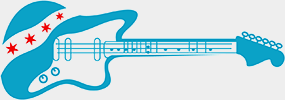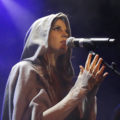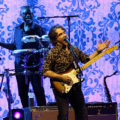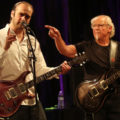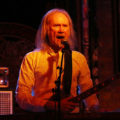Electronic godfather Jean-Michel Jarre traces origins through now over riveting laser display
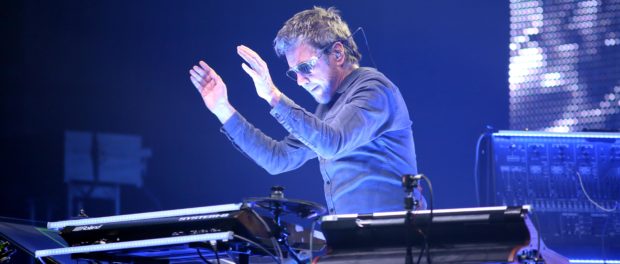 Photos by Andy Argyrakis
Photos by Andy Argyrakis
Nearly 50 years ago, Jean-Michel Jarre was one of electronic music’s founding fathers who’s since sold over 80 million albums and scored four Guinness World Records for the largest concerts ever staged. But other than his 1986 one-off in Houston for NASA’s 25th Anniversary in front of 1.3 million people, the French composer, performer and producer never previously mounted a tour through North America.
Yet make no mistake, Jean-Michel Jarre continues to be a true original, blending bits of EDM, ambient, trance and new age arrangements across non-stop sensory stimulation coordinated to each delectable beat.
That all changed when Jarre made his extremely belated debut on the “Electronica” World Tour at the seated Auditorium Theatre, which is unquestionably a beautiful and historic venue, though not nearly as practical for dancing as say a club or festival. Nonetheless, the crown jewel of Roosevelt University housed both a ground floor and balcony’s worth of culturally diverse appreciators, alongside the headliner’s massive projection panels and a laser spectacular that could easily rival Pink Floyd.
 Yet make no mistake, Jean-Michel Jarre continues to be a true original, blending bits of EDM, ambient, trance and new age arrangements across non-stop sensory stimulation coordinated to each delectable beat. An immediate case in point was “Heart Of Noise,” but before really revving up the party, the 68-year-old paused to reflect on that very night’s terrorist attack in Manchester outside pop starlet Ariana Grande’s concert, followed by an affirmation of music’s ability to spread positivity and contribute to the healing process.
Yet make no mistake, Jean-Michel Jarre continues to be a true original, blending bits of EDM, ambient, trance and new age arrangements across non-stop sensory stimulation coordinated to each delectable beat. An immediate case in point was “Heart Of Noise,” but before really revving up the party, the 68-year-old paused to reflect on that very night’s terrorist attack in Manchester outside pop starlet Ariana Grande’s concert, followed by an affirmation of music’s ability to spread positivity and contribute to the healing process.
It was far from the only time Jarre would address topical issues throughout the near two-hour undertaking, accompanying the pulsating “Exit” with a theme of human rights and equality, and a little later, mentioning he was the very first Western artist invited to play in post-Mao China prior to the chilled out “Souvenir Of China” selection. Several installments of the groundbreaking “Oxygene” suite also popped up in the set and called attention to climate change (sometimes dating as far back as 1976, long before it became a common point of consideration).
Most of the time, Jarre was posted behind his keyboard (flagged by two supporting players), but he also took to the guitar for “Conquistador,” plus the keytar during “Brick England” and “Zoolookologie.” However, it was his signature laser harp played in tandem with “The Time Machine” that had practically every smartphone glued to the action, though such style was once again accompanied by just as much substance from a world-renown entertainer who any unaware American should be desperate to discover.
For additional information on Jean-Michel Jarre, visit JeanMichelJarre.com.
For a list of upcoming shows at the Auditorium Theatre, visit AuditoriumTheatre.org.
